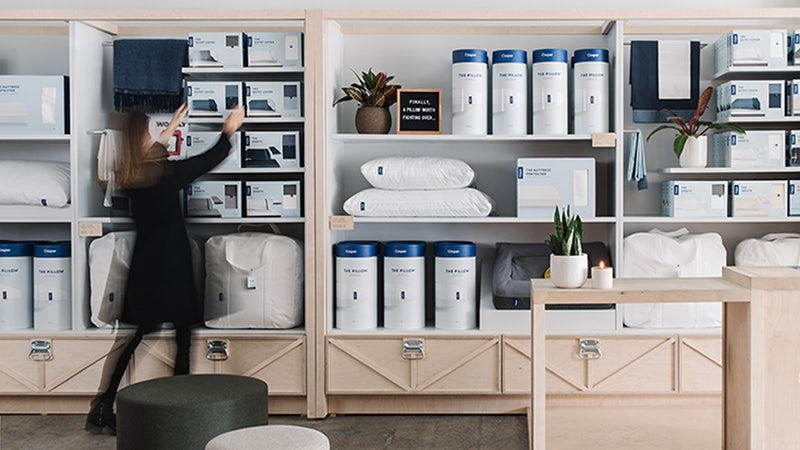As a consumer group subject to countless studies, the Millennials provided a key to how brands and retailers could use digital technology to provide convenience, speed and choice through online channels for shoppers of all ages. Despite a devastating recession early in their careers, epic student loans and rapid job turnover, a number of Millennials have advanced in their lives to the point where they own homes, have kids and manage a sizeable income. Marketers still want to understand this group, but some of the pressure is off, as attention shifts to Gen Z.
In terms of what the younger generation expects from retailers, a new study from location intelligence company Ubimo, “Generation Z and the Return to the Physical Store,” picks up the narrative where eCommerce ends. Developing over the last 25 years, alongside Millennials, eTailers optimized instant gratification by bringing the storefront to computers and phones, and by speeding up shipping so that all one has to do is click and open the door.
Not surprisingly, Gen Zers have more time on their hands. The study suggests they don’t mind devoting it to longer shopper journeys. With instant gratification available to them, they choose to wait. They prefer going to a physical store, up to 30 minutes away, to examine products and compare before making a purchase. A full 80 percent of those surveyed (Gen Z is here defined as consumers ages 16 to 25) say they shop in stores and look forward to that experience. Forty-seven percent don’t mind waiting up to seven days for an item that’s shipped to them. When shopping through various channels, 38 percent say it’s difficult to find precisely what they need online. And 35 percent say they’re not as comfortable shopping online as generations preceding them.
This is a wake-up call for brands, and some are taking the initiative to tailor the shopping experience for this audience. Ubimo focused on four “digital native” DTC brands that have leveraged this audience with brick-and-mortar locations. Digging deeper into the preferences of Millennials isn’t what they’re concerned with. The generational divide that Ubimo uncovered by measuring location-based data on foot traffic (using Ubimo’s Polaris solution) told a compelling story. To measure “generational lift,” Ubimo used the percentage of the store’s traffic of a given generation, compared with that generation’s percentage to the U.S. population overall. Consider: by 2020 Gen Z is expected to represent 40 percent of all U.S. consumers.
For Amazon 4-Star brick-and-mortar stores, the lift attributed to Gen Z shoppers was 37 percent, while these stores achieved only a five-percent lift by Millennials. This was roughly the same effect achieved by Warby Parker. Using a convenient free-shipping system, shoppers can try on glasses in multiple designs and purchase the affordable pair they prefer from the comfort of their home. With more of their shops opening in top markets, very few Millennials take advantage of going to the store, while again the lift from Gen Z was 37 percent. In the case of apparel DTC Everlane, the difference was even more stark. The digital-native dress brand saw 110 percent lift by Gen Z, and negative lift (-3 percent) from Millennials. Mattress brand Casper saw 17 percent lift from Gen Z and -2 percent from Millennials.
Because Ubimo’s technology deals with the out-of-home space, they also measured the “efficiency” of a store’s ability to attract foot traffic, comparing the new DTC brick-and-mortars to traditional brands. For instance, Ubimo found that Mattress Firm only attracts 12 percent of the foot traffic that Casper does.
Ubimo Co-founder and CEO Ran Ben-Yair considers the current retail marketplace at a “transitional point between Millennials and Gen Z.” He told me, “Those DTC brands that are setting up a physical presence that attracts Gen Z with selective locations and a tailored experience are actually performing much better. They use a more efficient format and gain much higher rates of visitation than traditional brands. This should give brands insight into how we adjust to a post-Millennial world in a more strategic way, creating an experience so visitors can enjoy a real-world location.”
The in-store experience isn’t a break from digital, but instead, an extension of the digital channels that bring consumers to the brick-and-mortar. Ben-Yair sees out-of-home, in its evolution toward digital and programmatic placement, as an integral part of this journey.
“It’s part of the omnichannel approach,” he explained. “What we’re seeing now is much less traditional billboards on highways, and instead a much more diverse universe. A Gen Z or Millennial walks into a gym and is surrounded by (in-store) out of home. And it happens in stores, at bus shelters, and in so many different formats. It’s now a question of how to make sure advertisers are using this medium in the most effective way and how to leverage the data.”
With the longer buyer’s journey carried out by Gen Z, across multiple channels and covering longer physical distances, marketers are given more time to make contact and engage with their next shopper.








